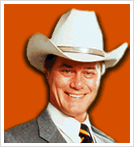
"Some of the medium's best practitioners take on the Bush Administration just in time for the election in this outraged work of comics journalism.
The Bush Junta: A Field Guide to Corruption in Government is an historical account of the high crimes and misdemeanors of the presidential administration of George W. Bush, as told by an international assemblage of world-class cartoonists. This fact-based, impeccably researched work of comics journalism chronicles the Bush administration in the context of the Bush family dynasty that spawned it. Topics include:
- The Nazi connections of the president's grandfather, Prescott Bush;
- The Bush family's membership in Yale's Skull and Bones Society;
- Former President George Bush's connections to the CIA, the Mafia, and Big Oil;
- His involvement in the October Surprise and Iran Contra scandals;
- The Bush family's strange relationship with the family of John Hinckley (the would-be assassin of President Ronald Reagan);
- The Panama Deception;
- The Persian Gulf War;
- The suspicious business practices of his Bush sons, particularly with regard to the Savings and Loan scandal of the 1980s;
- Young George W. Bush, his troubles with the law, his AWOL military record; George W.'s governorship of Texas;
- The electoral fraud of 2000 that resulted in his presidency;
- Unanswered questions about the terror attacks of September 11;
- The administration's "War on Terror" and its erosion of civil liberties under the Patriot Act and proposed Victory Act;
- The oil-based motives behind the Iraq War and how the public was deceived into supporting the war;
- The administration's shameful record on energy and the environment; and much more.
Also included are profiles of the key players in the current administration, a rogues gallery including Dick Cheney, Donald Rumsfeld, John Ashcroft, Condoleezza Rice, and Karl Rove".

"An international array of twenty-five cartoonists have researched, written, drawn, and laid bare the truth on George W. Bush, his family's American dynasty, their sordid business connections and various wars, and the Bush regime itself — in 24 humorous, witty, acerbic, and factual chapters. Ted Rall, Steve Brodner, Seth Tobocman, Lloyd Dangle, Peter Kuper, Carol Swain, Spain Rodriguez, Ted Jouflas, Ethan Persoff and many other freedom-loving cartoonists. A primer to Bushian corruption and malfeasance, The Bush Junta includes chapters on Gulf wars I and II, the S&L scandal, the 2000 Presidential coup, the Bush record on the environment and civil liberties, September 11, the Guantanamo camp, and profiles of such sinister figures as Donald Rumsfeld, Condeleezza Rice, John Ashcroft, and Karl Rove. Plus a series of bumper sticker-sized flyers that you can reproduce and surreptitiously attach to the backs of stalwarts attending GOP rallies".


The Bush Junta:
25 Cartoonists on the Mayberry Machiavelli and the Abuse of PowerEdited by Mack White & Barry Groth
Alex Jones - Introduction
Uri Dowbenco - Foreword
********
Marcel Ruijters - The Bush-Nazi Connection
Jaime Crespo - Bad to the Bone
Albo Heim - Super Spook
Larry Rodman - Iran-Contra
David Paleo & Mack White - The Bush-Hinckley Connection
Aleksandar Zograf & Mack White - Operation Just Cause
Jem Eaton - Poppy the President
Kenneth R. Smith - Bush Family Values
*******
Scott Gilbert - The Skies of Texas
Penny Van Horn & Mack White - The Compassionate Conservative
Carol Swain - Florida 11/7/00
Seth Tobocman - The Carlyle Group
Ted Rail - Checklist for the Neo-Fascists
Mack White - September 11th
Steve Brodner - Environmental Plunder Administration
Alejandro Alvarez - Camp X-Ray Guantanamo
Spain Rodriguez - The War
Ethan Persoff & Jasun Huerta - Your Very Own Information Campaign
*******
Scott Marshall - Snowflake
Lloyd Dangle - Turd Blossom
Ted Jouflas - With Sweetness
Ethan Persoff - Blacks, Babies, and Battered Women
Mark Landman - The Man in the Shadows
Peter Kuper - Ceci n'est pas une Comic
*******
Adam Gorightly - Afterword

236 pages of cartoon research featuring some of the Ewings' Closest Friends like: Bush Father, Bush Son, Bush Grandfather, JFK, Castro, Osama, Noriega, Kissinger, Reagan, Sandinistas, Jimmy Carter, Contras, Rumsfeld, Clinton, Saddam, Carlucci, Cheney, Wolfowitz, Adolf Hitler and many other distinguished oil barons, gentlemen and well-wishers.
click it and
get it









































